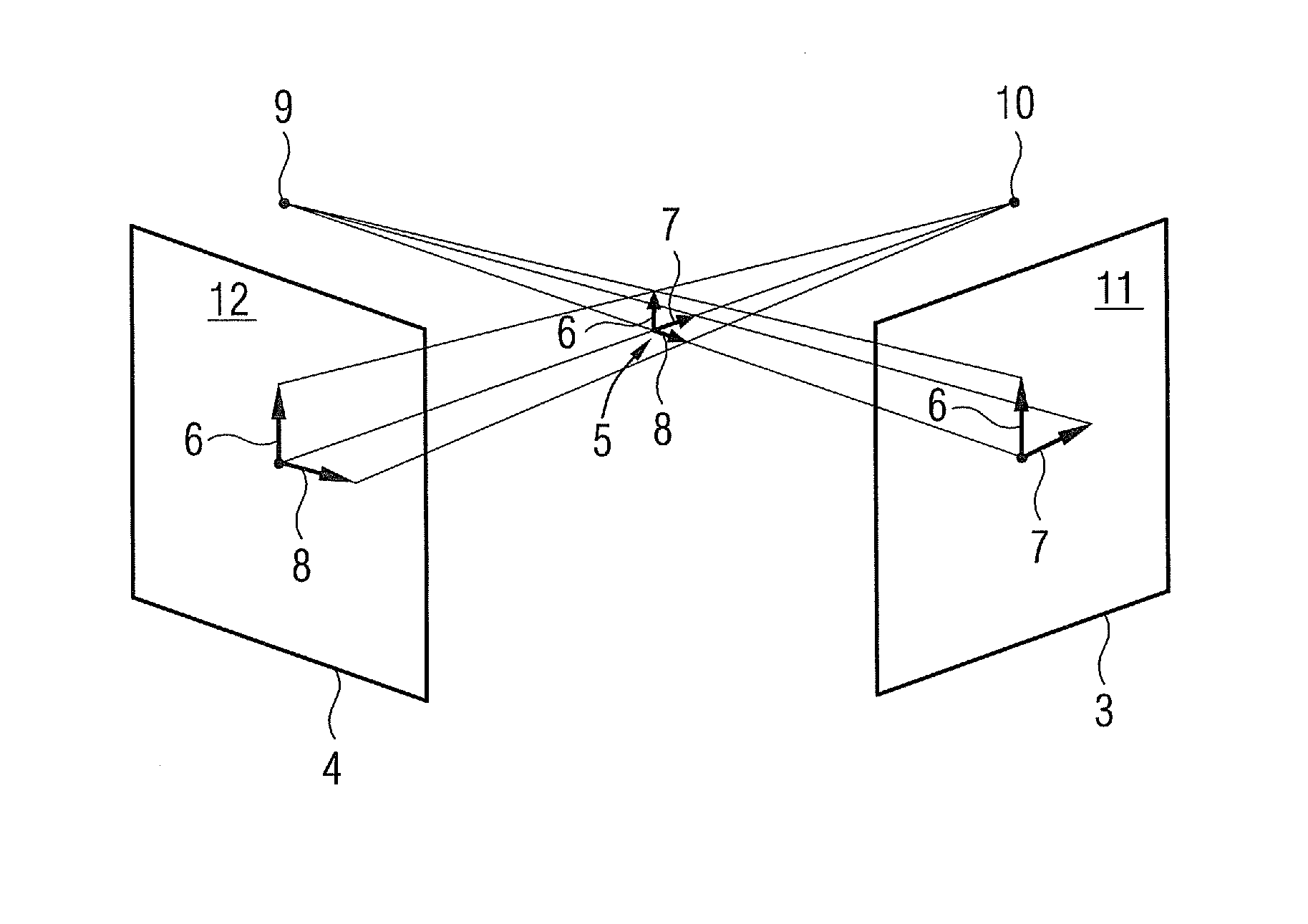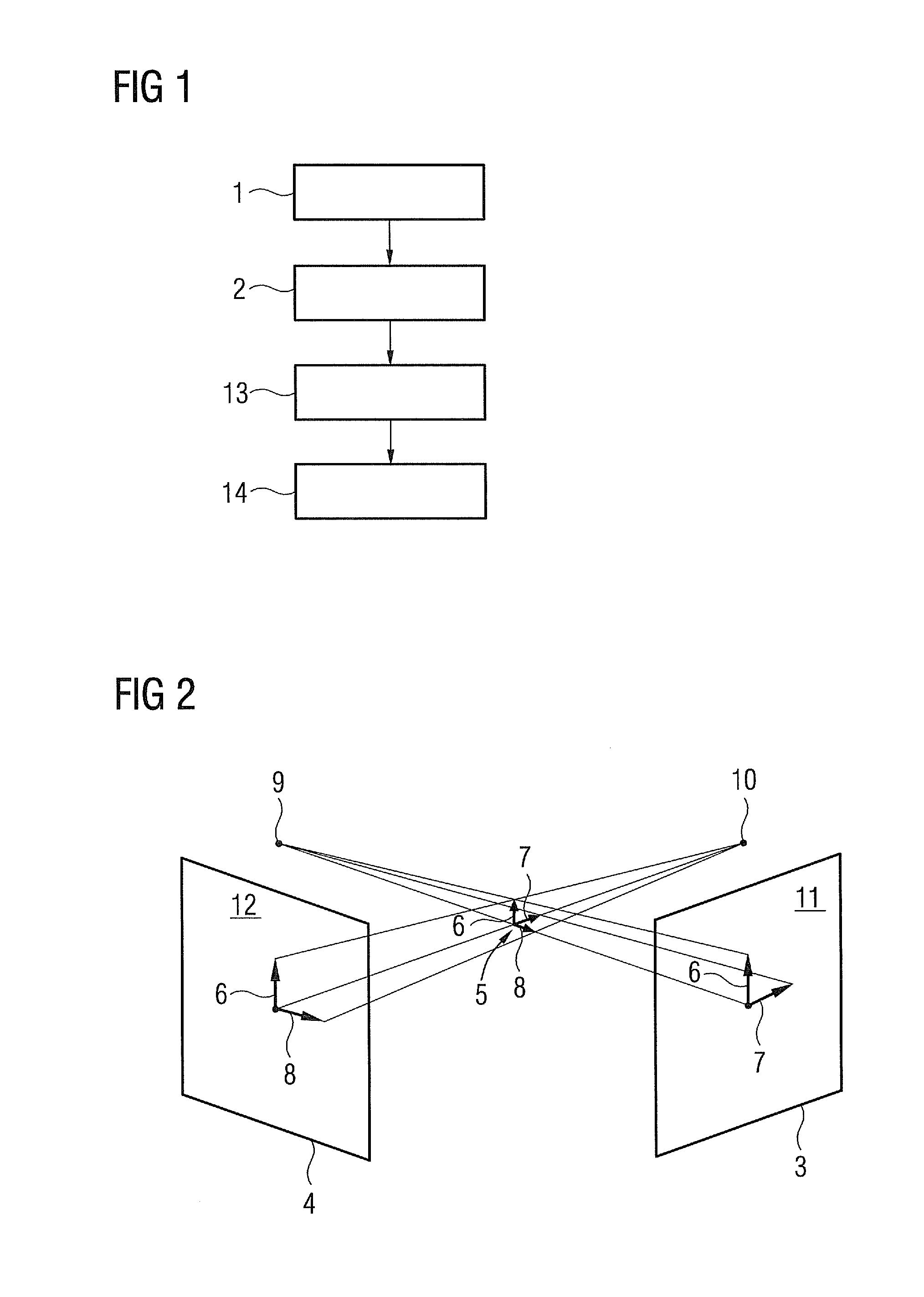Method for generating a four-dimensional representation of a target region of a body, which target region is subject to periodic motion
- Summary
- Abstract
- Description
- Claims
- Application Information
AI Technical Summary
Benefits of technology
Problems solved by technology
Method used
Image
Examples
Embodiment Construction
[0028]FIG. 1 shows a flow diagram of the method according to the invention. In a step 1, provision is made for recording projection images which, in the exemplary embodiment that is represented here, show the coronary vessels and the heart from different projection directions. The recording lasts for several heart cycles in this case. An electrocardiogram is recorded using a suitable measuring device at the same time as the projection images.
[0029]In a step 2, the dynamic reconstruction of a static three-dimensional image dataset from the two-dimensional projection images now takes place, wherein a non-periodic motion model is used and is adapted in an optimization method to at least some of the actual recorded projection images. Specifically, provision is made for determining a current reconstruction dataset in a dynamic reconstruction method, in particular an FDK method, during each step in an optimization method. From this, projection images are then determined by means of dynami...
PUM
 Login to View More
Login to View More Abstract
Description
Claims
Application Information
 Login to View More
Login to View More - R&D
- Intellectual Property
- Life Sciences
- Materials
- Tech Scout
- Unparalleled Data Quality
- Higher Quality Content
- 60% Fewer Hallucinations
Browse by: Latest US Patents, China's latest patents, Technical Efficacy Thesaurus, Application Domain, Technology Topic, Popular Technical Reports.
© 2025 PatSnap. All rights reserved.Legal|Privacy policy|Modern Slavery Act Transparency Statement|Sitemap|About US| Contact US: help@patsnap.com



